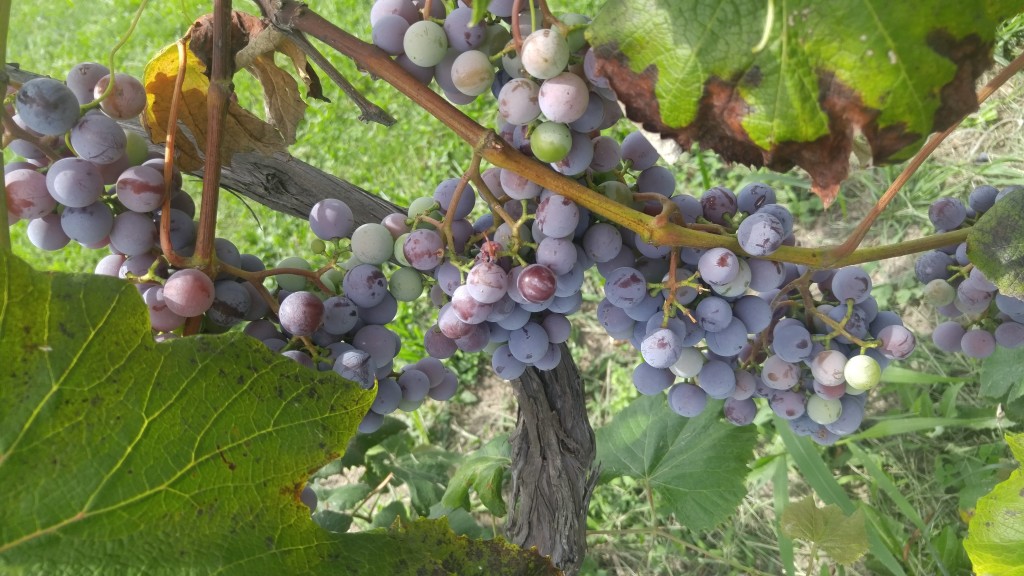According to my records, my grapes are about ten days ahead of last year at this date. Every growing season is different and any particular year doesn’t necessarily line up with seasonal average growing conditions.
Ten days is a long time when it comes to grapes. I covered the grapes with netting last week to keep the birds from robbing the grapevines. If I had followed the calendar and waited until last year’s date to cover them, the birds would have eaten them all by now.
I have a trick that I use to determine when to put on the netting. I have a vine of early grapes that ripen about a week earlier than my main crop. When the birds start eating the grapes from that vine, I know it’s time to get the netting on my main crop. It’s a quick and easy way for me to keep track of grape development since I have so many other things going on than just grapes. Serious grape growers have more sophisticated ways o monitoring their grapes but this method works for me.
How did my grapes get so far ahead from last year? Plants need a certain amount of heat during the growing season to grow and develop. Scientist have developed a thing called “growing degree days” to help farmers predict when crops reach a particular stage of development. I looked the the growing degree days for our area to see if how much warmer the growing season was, thinking that might account for the early timing of my grapes. The record shows that there are fewer growing degrees this year than last! How could that be?
Some time earlier during the growing season, we had a warm stretch of weather that pushed the grapes into further along in their development than they normally would be. That means the grapes would be that much further along. Raw degree days won’t tell us very much about plant development for specific crops. Plant scientists have come up with methods to apply that data that are unique to each individual crop. Had I been following those scientific parameters, I would have known even before the birds when the grape would be ready to cover.
Bob
